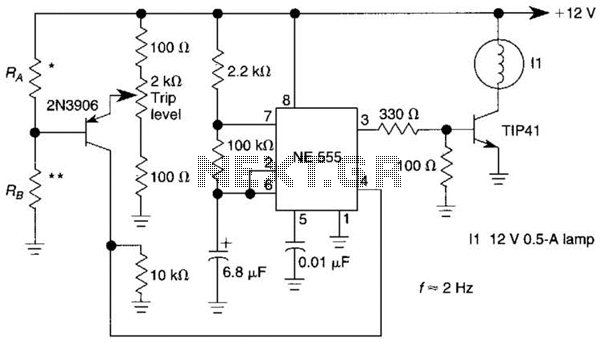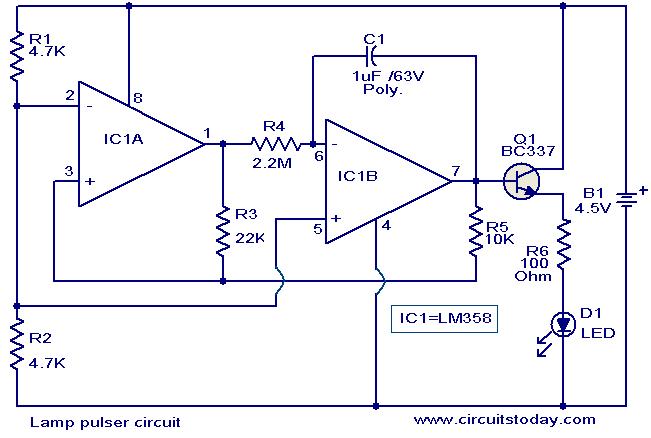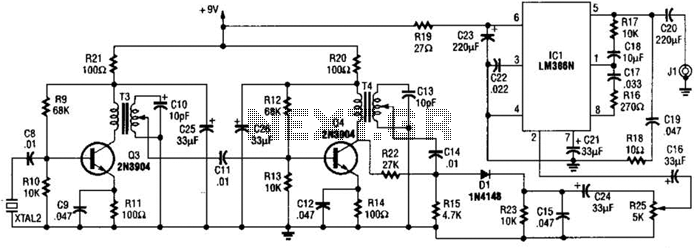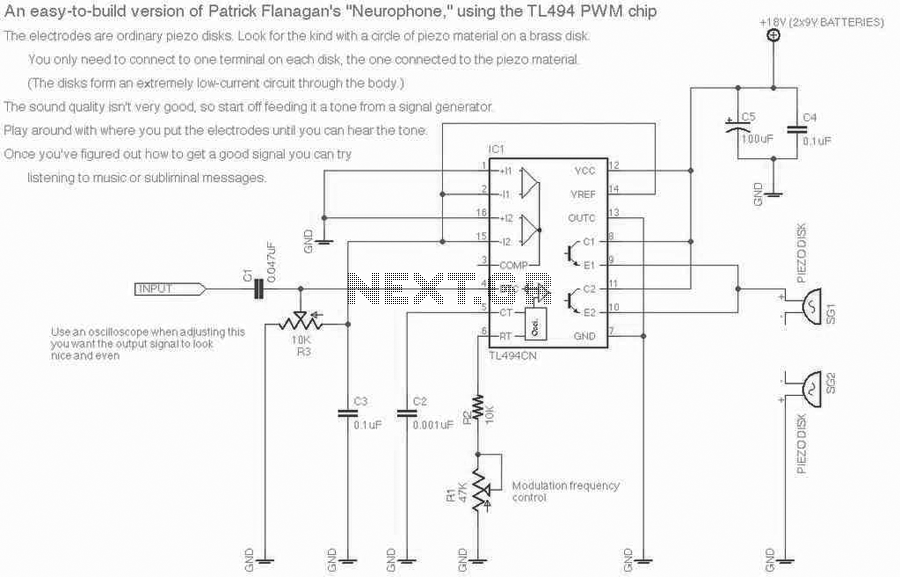
Ultrasound Pulser
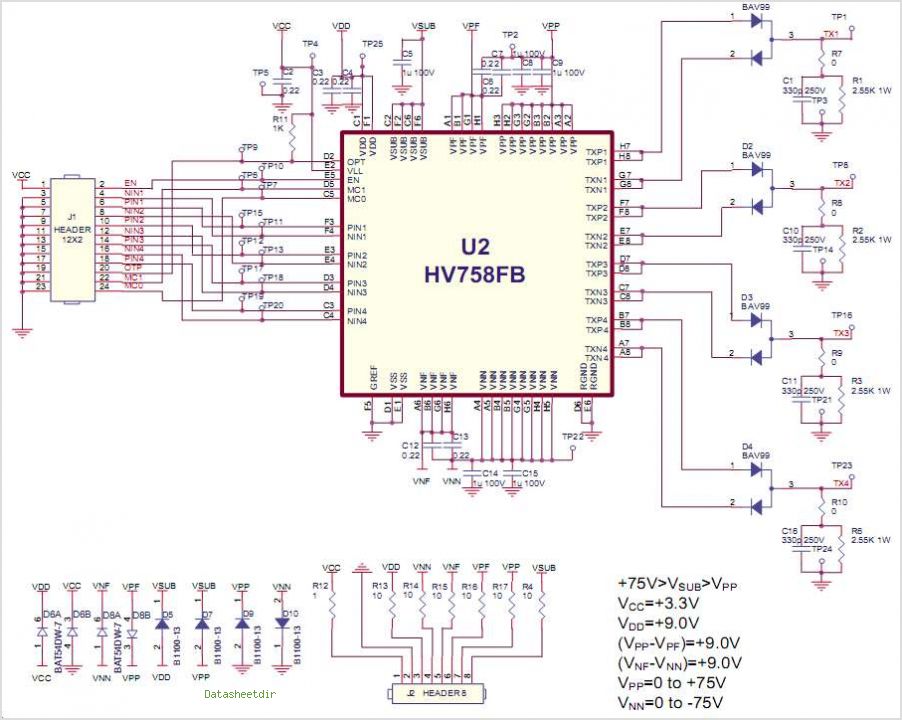
The Smart Ballast IC is designed to control a fluorescent lamp ballast, including a Discontinuous Conduction Mode Power Factor Correction (PFC), lamp inverter control, and a high voltage level shift half-bridge driver. The application requires a minimum number of external components. It includes integrated low-pass filters and internal compensation for the PFC voltage loop control. The preheating time is adjustable with a single resistor within a range of 0 to 2000 ms. Similarly, the preheating frequency and run frequency are configured using resistors. The control concept meets the requirements for T5 lamp ballasts, including end-of-life detection, capacitive mode operation detection, and other protective measures, even in multi-lamp configurations. The ICB1FL02G is user-friendly and simple to design, making it a cost-effective solution for fluorescent lamp ballasts. By Infineon Technologies Corporation.
The Smart Ballast Integrated Circuit (IC) serves as a crucial component in the control of fluorescent lamp ballasts, specifically designed to enhance energy efficiency and operational reliability. It incorporates a Discontinuous Conduction Mode Power Factor Correction (PFC) which optimizes the input power factor, thereby reducing harmonic distortion and improving the overall efficiency of the lighting system. The integrated lamp inverter control allows for effective management of the lamp's operational characteristics, ensuring stable performance under varying load conditions.
The design of the Smart Ballast IC minimizes the need for external components, which simplifies the circuit layout and reduces overall manufacturing costs. The inclusion of low-pass filters within the IC aids in filtering out high-frequency noise, contributing to the stability of the PFC voltage loop. This internal compensation mechanism is essential for maintaining consistent voltage levels, which is critical for the reliable operation of fluorescent lamps.
Adjustability is a key feature of this IC, as the preheating time can be easily modified by changing a single resistor value, allowing for a range of preheating durations from 0 to 2000 milliseconds. This flexibility is particularly advantageous in applications where different lamp types or operating conditions may require specific preheating strategies. Additionally, both preheating and run frequencies are set via resistor configurations, enabling designers to tailor the performance characteristics of the ballast to meet specific application needs.
The control concept embedded within the Smart Ballast IC is comprehensive, addressing various operational requirements for T5 lamp ballasts. It includes advanced features such as end-of-life detection, which alerts the system to the need for lamp replacement, and capacitive mode operation detection, ensuring safe operation under all conditions. The IC also implements protective measures to safeguard against potential faults, making it suitable for use in multi-lamp configurations.
The ICB1FL02G model stands out for its ease of use and design, facilitating rapid development cycles and reducing time-to-market for manufacturers. Its cost-effectiveness combined with robust performance makes it an ideal choice for modern fluorescent lamp ballast applications, reinforcing its value in the lighting industry.The Smart Ballast IC is designed to control a Fluorescent Lamp Ballast including a Discontinuous Conduction Mode Power Factor Correction (PFC), a lamp Inverter Control and a High Voltage Level Shift Half-Bridge Driver. The application requires a minimum of external components. There are integrated low pass Filters and an internal compensation for the PFC voltage loop control. Preheating time is adjustable by a single resistor only in the range between 0 and 2000ms. In the same way the preheating frequency and run frequency are set by resistors only. The control concept covers requirements for T5 lamp ballasts such as detection of end-of-life and detection of capacitive mode operation and other protection measures even in multilamp topologies. ICB1FL02G is easy to use and easy to design and therefore a basis for a cost effective solution for fluorescent lamp ballasts.
By Infineon Technologies Corporation 🔗 External reference
The Smart Ballast Integrated Circuit (IC) serves as a crucial component in the control of fluorescent lamp ballasts, specifically designed to enhance energy efficiency and operational reliability. It incorporates a Discontinuous Conduction Mode Power Factor Correction (PFC) which optimizes the input power factor, thereby reducing harmonic distortion and improving the overall efficiency of the lighting system. The integrated lamp inverter control allows for effective management of the lamp's operational characteristics, ensuring stable performance under varying load conditions.
The design of the Smart Ballast IC minimizes the need for external components, which simplifies the circuit layout and reduces overall manufacturing costs. The inclusion of low-pass filters within the IC aids in filtering out high-frequency noise, contributing to the stability of the PFC voltage loop. This internal compensation mechanism is essential for maintaining consistent voltage levels, which is critical for the reliable operation of fluorescent lamps.
Adjustability is a key feature of this IC, as the preheating time can be easily modified by changing a single resistor value, allowing for a range of preheating durations from 0 to 2000 milliseconds. This flexibility is particularly advantageous in applications where different lamp types or operating conditions may require specific preheating strategies. Additionally, both preheating and run frequencies are set via resistor configurations, enabling designers to tailor the performance characteristics of the ballast to meet specific application needs.
The control concept embedded within the Smart Ballast IC is comprehensive, addressing various operational requirements for T5 lamp ballasts. It includes advanced features such as end-of-life detection, which alerts the system to the need for lamp replacement, and capacitive mode operation detection, ensuring safe operation under all conditions. The IC also implements protective measures to safeguard against potential faults, making it suitable for use in multi-lamp configurations.
The ICB1FL02G model stands out for its ease of use and design, facilitating rapid development cycles and reducing time-to-market for manufacturers. Its cost-effectiveness combined with robust performance makes it an ideal choice for modern fluorescent lamp ballast applications, reinforcing its value in the lighting industry.The Smart Ballast IC is designed to control a Fluorescent Lamp Ballast including a Discontinuous Conduction Mode Power Factor Correction (PFC), a lamp Inverter Control and a High Voltage Level Shift Half-Bridge Driver. The application requires a minimum of external components. There are integrated low pass Filters and an internal compensation for the PFC voltage loop control. Preheating time is adjustable by a single resistor only in the range between 0 and 2000ms. In the same way the preheating frequency and run frequency are set by resistors only. The control concept covers requirements for T5 lamp ballasts such as detection of end-of-life and detection of capacitive mode operation and other protection measures even in multilamp topologies. ICB1FL02G is easy to use and easy to design and therefore a basis for a cost effective solution for fluorescent lamp ballasts.
By Infineon Technologies Corporation 🔗 External reference
